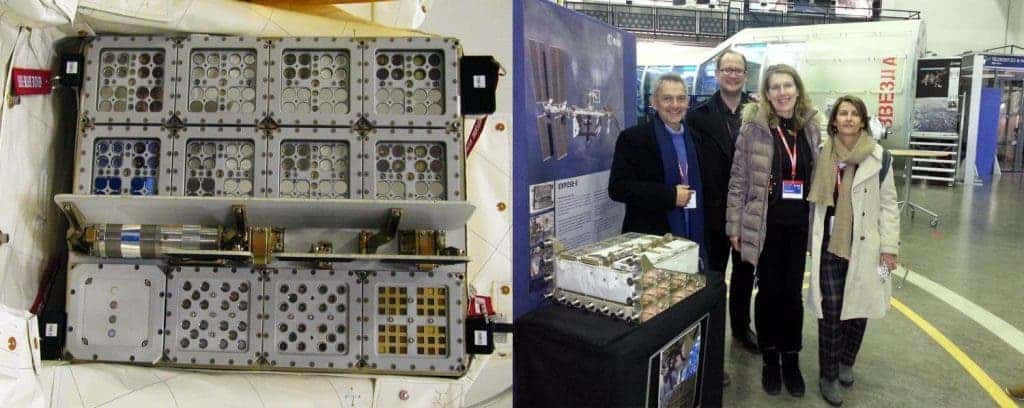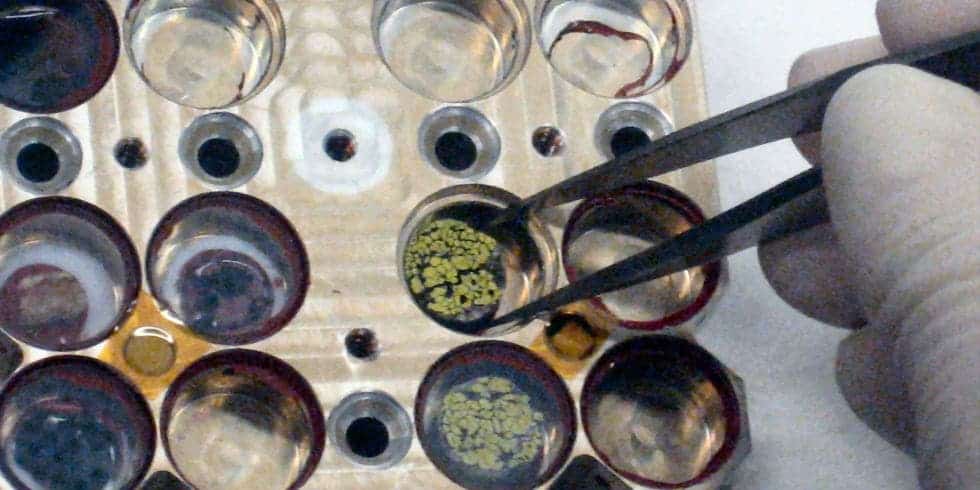Researchers at European Space Agency (ESA) collected fungi that live in one of the harshest places on Earth — McMurdo Dry Valleys, Antarctica — then shipped some to the ISS. Here, populations were subjected to both a Martian environment and directly exposed to space. In both situations, fungi survived after 18 months though those breeding in the Martian environment proved to be far better adapted. Lichen were also tested under the same circumstances. These too survived, which gives hope that there might be a chance for life on Mars to exist.

Left: The EXPOSE-E platform was sent on the ISS. Right: the European researchers involved in the study. Image: ESA
The European researchers went to the Antarctic Victoria Land a couple years back, and collected specimens belonging to Cryomyces antarcticus and Cryomyces minteri. These are what scientists class as cryptoendolithic fungi — microorganisms able to survive in the cracks of rocks, hence they stay “hidden” (crypto).

Section of rock coloniszed by cryptoendolithic microorganisms and the Cryomyces fungi in quartz crystals under an electron microscope. Credit: S. Onofri et al.
The organisms were placed in tiny cells (1.4 cm in diameter) and shipped to the International Space Station on a platform for experiments known as EXPOSE-E. The platform was placed outside the Columbus module with the help of an astronaut from the team led by Belgian Frank de Winne. For 18 months, half the population was exposed unabated to space, while the other half was isolated in a habitat that resembled conditions on Mars. Specifically: 95% CO2, 1.6% argon, 0.15% oxygen, 2.7% nitrogen and 370 parts per million of H2O; and a pressure of 1,000 pascals (1% of that on Earth). Through optical filters, radiation was shot to simulate the environment of Mars.
About 60% endolithic communities survived in the Martian environment, with DNA still intact. However, less than 10% of the retrieved fungi samples exposed to Martian conditions were capable of proliferating and forming colonies. Only 35% of the fungal cells exposed to space conditions kept their membranes intact.
As part of the experiment, researchers also studied the survivability and proliferation of Rhizocarpon geographicum and Xanthoria elegans. These lichen species can be found in very high-mountain regions, like Spain’s Sierra de Gredos and Austria’s Alps. Again, half were exposed to space, while the other half lived in a Martian dome. After more than a year and a half, the two species of lichens ‘exposed to Mars’ showed double the metabolic activity of those that had been subjected to space conditions, even reaching 80% more in the case of the species Xanthoria elegans.
The findings published in Astrobiology offer clues that if life ever appeared on Mars, it could still be there. Maybe in the cracks on crevices of Martian rocks, which is why NASA is very careful where it sends its rovers to lower the risk of biological contamination.










